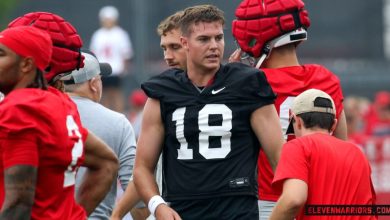The Clemson football team’s “best is yet to come”

The Clemson Football Team: A Future Fueled by Optimism and Growth
The Clemson Tigers have long been synonymous with success in college football. Under the leadership of head coach Dabo Swinney, the program has built a legacy of excellence, including multiple national championships and numerous appearances in the College Football Playoff (CFP). Yet, as the 2025 season approaches, the mantra “The best is yet to come” encapsulates the program’s belief in its potential for even greater accomplishments.
A Legacy of Excellence
Over the past decade, Clemson has emerged as a powerhouse in college football, driven by Swinney’s leadership and a culture centered on family, faith, and hard work. This culture has fostered consistent success on the field, with elite recruiting classes, innovative offensive schemes, and a defense that has consistently ranked among the nation’s best.
However, as is the case with all great programs, challenges arise. Recent seasons have been marked by moments of inconsistency, injuries, and a more competitive ACC landscape. Yet, Clemson’s leadership and fanbase remain confident that these challenges are stepping stones to future triumphs.
Key Pillars for Clemson’s Optimistic Future
1. Dabo Swinney’s Vision
At the heart of Clemson’s optimism is Swinney’s unwavering belief in the program’s potential. Since taking over as head coach in 2008, Swinney has instilled a culture of relentless improvement. His philosophy, rooted in personal growth and team unity, has become a cornerstone of Clemson’s identity.
Swinney’s mantra, “The best is yet to come,” isn’t just a catchphrase—it’s a commitment to continued excellence. He has repeatedly emphasized the importance of adapting to change while staying true to the program’s core values. As college football evolves with NIL (name, image, and likeness) deals and transfer portal dynamics, Swinney’s ability to navigate these changes will be crucial for Clemson’s sustained success.
2. Promising Talent on the Roster
Clemson boasts a roster brimming with young talent poised to make an impact in the coming seasons. Quarterback Cade Klubnik, a rising star with a strong arm and exceptional field vision, is expected to lead the Tigers’ offense. Klubnik’s leadership, combined with his ability to make plays under pressure, has already drawn comparisons to Clemson greats like Deshaun Watson and Trevor Lawrence.
On the defensive side, linebacker Jeremiah Trotter Jr. continues to shine as a leader and playmaker. Trotter’s instincts, speed, and tackling ability make him a cornerstone of Clemson’s defense. Alongside a talented group of defensive linemen and defensive backs, Trotter represents the future of a unit that has long been a hallmark of Clemson’s success.
3. Elite Recruiting and Player Development
Clemson’s success on the recruiting trail has been a key factor in its rise to prominence. The Tigers consistently rank among the top programs in recruiting, securing commitments from some of the nation’s best high school athletes. The 2025 recruiting class, highlighted by five-star wide receiver Jayden Patterson and defensive end Malik Simmons, exemplifies Clemson’s ability to attract elite talent.
Player development is another area where Clemson excels. The coaching staff’s ability to nurture players’ skills and prepare them for the NFL has been a significant draw for recruits. From strength and conditioning programs to individualized coaching, Clemson’s holistic approach ensures that players reach their full potential.
4. Innovative Offensive and Defensive Strategies
The Tigers’ coaching staff continues to explore new strategies to adapt to the ever-changing landscape of college football. Offensive coordinator Garrett Riley, known for his creativity and ability to maximize talent, is working to revamp Clemson’s offense with a focus on tempo and versatility.
Defensively, Clemson remains committed to a disciplined and aggressive approach. With a new defensive coordinator (pending hire) expected to bring fresh perspectives, the Tigers aim to solidify their reputation as a defensive juggernaut.
Challenges and Opportunities
While Clemson’s future looks bright, the program faces challenges that must be addressed to realize its full potential.
Increased Competition
The ACC has become more competitive, with programs like Florida State, North Carolina, and Miami making strides in recruiting and on-field performance. Additionally, non-conference games against top-tier opponents add another layer of difficulty to Clemson’s schedule.
Adapting to NIL and Transfer Portal Dynamics
The emergence of NIL deals and the transfer portal has changed the landscape of college football. Clemson has historically taken a conservative approach to these developments, but adapting to these changes will be essential for attracting and retaining top talent.
Building Depth Across All Positions
Injuries and departures have occasionally exposed a lack of depth in certain areas of the roster. Addressing this issue through recruiting and player development will be critical for maintaining consistency throughout the season.
Looking Ahead
As the 2025 season approaches, Clemson’s fanbase has every reason to be optimistic. The Tigers’ combination of talented players, visionary leadership, and a commitment to excellence positions them for continued success. Swinney’s confidence in the program’s trajectory is shared by players and staff alike, creating a sense of unity and purpose that is essential for achieving greatness.









